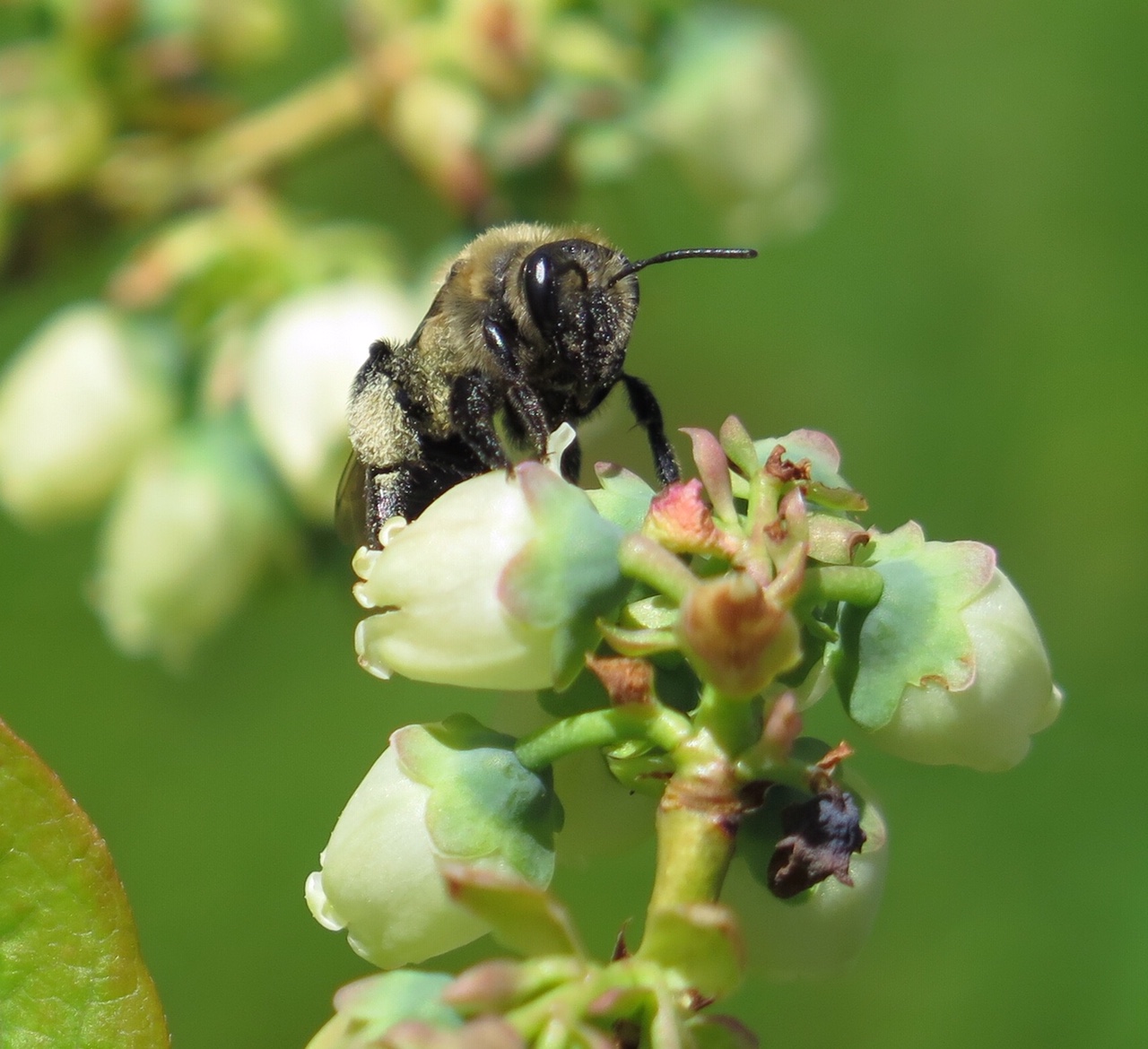Variation in pollinator potential to carry a blueberry fungal pathogen and assessment of transfer efficiency in two managed bee species
DOI:
https://doi.org/10.26786/1920-7603(2019)529Abstract
Plant diseases are ubiquitous in agricultural systems and are major sources of economic loss. Vaccinium corymbosum, or highbush blueberry, is an economically important crop affected by an insect-vectored, fungal pathogen, Monilinia vaccinii-corymbosi, or mummy berry disease. Highbush blueberry yield is maximized through outcrossed pollination; however, the pathogen is vectored by pollinators. We used field collections and molecular techniques to identify floral visitors to highbush blueberry and quantify levels of pathogen spores carried by each visiting species. We also conducted a cage trial using single flower visits to determine differences in vectoring efficiency between two managed pollinators, Apis mellifera and Bombus impatiens. We found that bees, flies, and wasps were all common visitors, and that all bee species and several fly and wasp species carried the pathogen. Of the bee species, A. mellifera most often tested positive for the pathogen, while Dolichovespula maculata (Bald-faced Hornet) tested positive most among wasps and Mallota posticata among flies. Considering only individuals that tested positive, mummyberry levels per individual were highest in D. maculata and Andrena bees, and relatively low in flies. In cage trials, we found no differences between A. mellifera and B. impatiens in pathogen load or transfer efficiency, suggesting that these managed species are equally capable of vectoring mummyberry during a single visit to a blighted stem and then a flower. This research demonstrates the variety of floral visitors that carry mummyberry and that two common commercial pollinator species have similar potential to vector mummyberry to blueberry flowers during a single visit.

Downloads
Published
How to Cite
Issue
Section
License
Copyright (c) 2019 Matthew David Hank Boyer, Lynn S Adler

This work is licensed under a Creative Commons Attribution 4.0 International License.
JPE is an open access journal which means that all content is freely available without charge to the user or his/her institution.
Authors who publish with this journal agree to the following terms:
1) Authors retain copyright and grant the journal right of first publication with the work simultaneously licensed under a Creative Commons Attribution License that allows others to share the work with an acknowledgement of the work's authorship and initial publication in this journal.
2) Authors are able to enter into separate, additional contractual arrangements for the non-exclusive distribution of the journal's published version of the work (e.g., post it to an institutional repository or publish it in a book), with an acknowledgement of its initial publication in this journal.
3) Authors are permitted and encouraged to post their work online (e.g., in institutional repositories or on their website) prior to and during the submission process, as it can lead to productive exchanges, as well as earlier and greater citation of published work (See The Effect of Open Access).
To assure a broader targeted audience, content will be included into databases (such as EBSCO) and directories (such as DOAJ).











